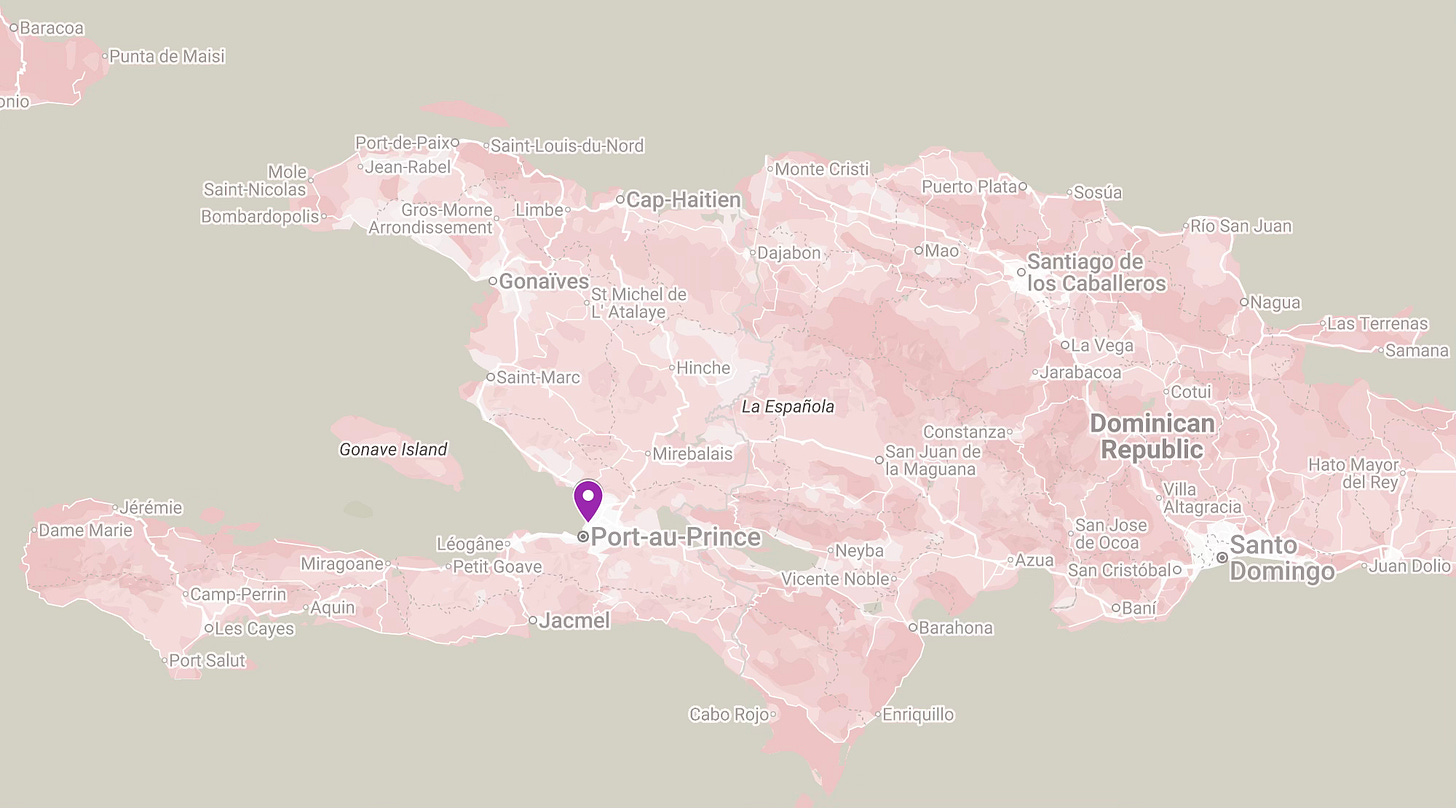Drone Proliferation Among Haitian Gangs
A drone attack in Port-au-Prince raises urgent questions about drone technology and the cost to civilians.
Drone Strike in Haitian Slum Kills Eight Children
Late on the night of 22 September 2025, a drone attack in Port‐au‐Prince's Cité Soleil neighborhood killed at least eight children and left several others injured after a projectile believed to have been targeting a gang leader was fired from a drone.
What Happened
Here is what we know so far:
The National Human Rights Defence Network (RNDDH), a human rights organization, stated that the explosions resulted from two kamikaze drones launched by the Haitian National Police task force. The Haitian police and prime minister’s office have not commented on the situation.
The attack occurred in Cité Soleil, one of Port‐au‐Prince’s most densely populated and impoverished areas.
Cité Solelil is controlled by Viv Ansanm, a major gang alliance recognized by the U.S. as a foreign terrorist group. One of Viv Ansamn’s leaders, Jimmy Chérizier, promised to seek revenge for the attacks.
Eight children died and six others were wounded.
Broader Context
To further understand this incident, it is necessary to analyze the broader Haitian landscape:
Worsening insecurity and violence
Haiti has been plagued by gang violence, weak state capacity, and enduring political instability. Zones like Cité Soleil often lack strong protection by formal security forces.Global proliferation of drones
The deployment of drones in conflict settings is growing worldwide. What makes drone or projectile attacks from the air especially disruptive is that they are operating within unregulated spaces.Vulnerability of civilians
As with many urban conflict zones, civilians in densely populated, under-resourced neighborhoods are affected the most.Accountability and transparency challenges
Despite these attacks, investigations in Haiti often fail to progress.
Why It Matters
There are significant gaps in regulation and international consensus. In regions marked by weak state control, especially in conflict zones, there is little to no enforcement or agreement on the rules governing drone strikes. This lack of transparent governance can lead to unchecked use of military drones.
Each incident sets a concerning precedent. Repeated use of drone strikes may lower the threshold for violence, undermine public trust in governance, and leave populations feeling unprotected and vulnerable in their state. These issues reveal the need for stricter regulation and greater transparency in the deployment of drone technology.
How Haiti’s Gangs Might Be Using Drones
The recent strike in Cité Soleil poses the question of how drones are being used in urban gang conflicts, and what might that mean for Haiti in the future?
1) How gangs and state actors in Haiti are likely using drones now
• Surveillance and intelligence: Drones act as eyes over areas that are otherwise difficult to access.
In Port-au-Prince, authorities themselves have publicly shown drone footage used against suspected gang leaders, and reporting indicates drones have been in use there since March 2025 and were first publicly signalled by police in June 2025.
• Kamikaze/weaponized attacks: The Cité Soleil incident and other reports of drone use describe explosive drones and drone-delivered projectiles being used to strike targets in populated neighborhoods, which is an escalation from surveillance to purposeful lethal deployment.
• Tactical harassment and area denial: Small armed drones can be used to harass rival gangs or force civilians to stay indoors. Violent non-state actors have a consistent history of adapting small drones in other conflicts to impose costs and shape outcomes.
• Low-cost, improvised weapons: Consumer quadcopters and off-the-shelf components have been repurposed as delivery mechanisms for explosives or grenades in multiple conflicts worldwide. The same technical pathway is plausible for gangs that have local access to parts and some technical know-how.
2) Why Haiti’s situation is especially vulnerable
• Extensive gang control and weak state presence: The United Nations and news reporting show that gangs control large areas of Port-au-Prince and have created environments where outside actors and local authorities struggle to operate safely, creating a permissive setting for both gangs and other actors seeking to use drones.
• Proliferation without accountability: Where oversight and rule-of-law are weak, drones can be purchased or repurposed with little traceability and used with minimal risk of immediate investigation or restraint (as seen in the contested attributions around recent strikes).
3) The likely trajectories and international precedents this may create
• Normalization of aerial lawlessness: If drone strikes in urban areas become a repeated strategy, whether used by police, private contractors, or armed groups, other criminal organizations and fragile states could adopt similar tactics. Mexico and parts of the Sahel already demonstrate how criminal and insurgent groups utilize this accessible technology. Haiti is at risk of becoming part of that trend.
• Arms-race dynamics among local actors: The deployment of weaponized drones tends to prompt rivals to acquire similar tools or countermeasures, driving a rapid escalation that is cheap to sustain but costly to civilians. That dynamic was visible after ISIS and cartel drone use, and could recur in Haiti.
• Wider regional spillover: If drone tactics reduce the costs for gangs to enact violence, neighboring states and transnational criminal networks may incorporate similar playbooks, complicating regional security and humanitarian responses.
Conclusion
The drone attack in Haiti reinforces the notion that as weapon technology becomes increasingly remote, accessible, and airborne, the potential for error is magnified. Fragile environments, such as those in Haiti, are particularly vulnerable. As these technologies become more advanced, the capacity of greater harm increases.
The international community, local authorities, and civil society must interpret this drone strike as the beginning of a deliberate effort to contain and regulate such technology, which, if left unmonitored, has the potential to transform the nature of urban violence fundamentally.


